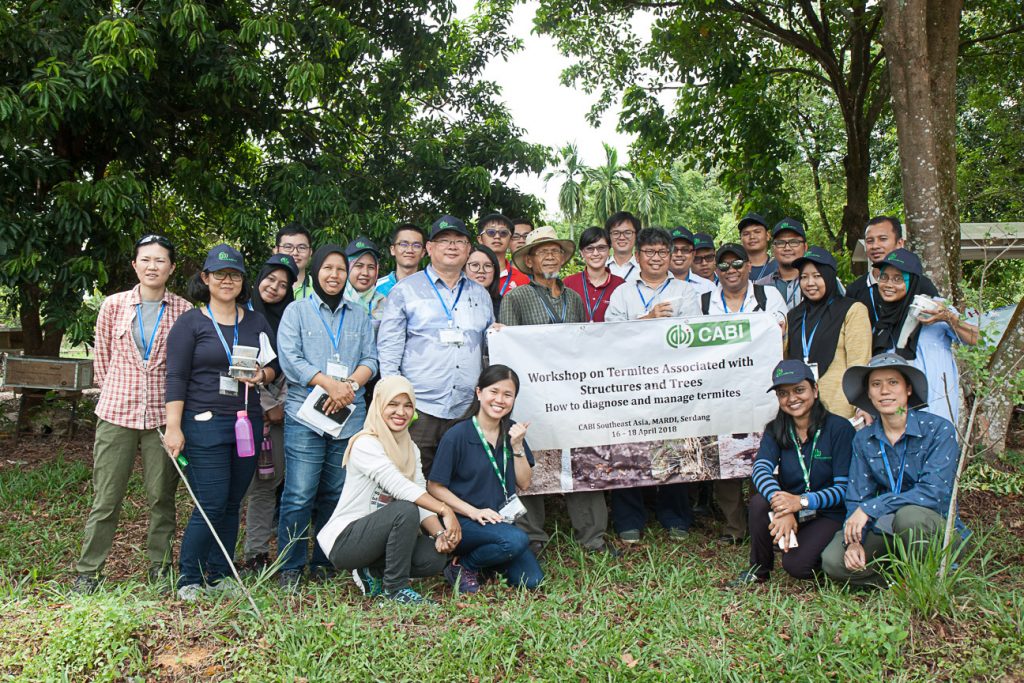How can we ensure safety in Events Management, Religious Festivals, and Tourism?
By Maximiliano Korstanje One of the aspects that motivated me to write a book which focuses on Event Management Security as the main object of study was the need to understand what we, the experts in terrorism and political violence, can do in order for tourist destinations to be protected. Although some sociologists have claimed…
Phytosanitary Risk Management Programme – transforming livelihoods in Pakistan
Meet Rozina Babar, she is one of thousands of smallholder farmers in Pakistan whose livelihoods are threatened by agricultural pests and diseases that can devastate crops and ultimately have a severe impact on food security and profitability. However, thanks to the CABI-led Phytosanitary Risk Management Programme – funded by USAID-USDA and working with partners including…
Showcasing smart agriculture in comic exhibition
Comics have long played a role in entertaining young people, and even adults, going right back to the Golden Age of Comic books in the 1930s. One only has to think of Superman, Batman, Wonder Woman, Captain Marvel and many more. But you would be forgiven for being surprised at knowing that comics can also…
Tourism creates 8% of global carbon emissions – can they be curbed?
The global carbon footprint of the travel and tourism industry has long been a concern, with aviation in particular being a major source of greenhouse gases, and the major component of the estimated carbon cost of tourism. But a new analysis published in Nature Climate Change says that the carbon footprint of the industry is…
Cotton harvest picture special
The power of the image paints a picture that speaks a thousand words and that is certainly the case with these fantastic images taken by photographer Asim Hafeez. Asim was commissioned by CABI to document the process of harvesting cotton in Pakistan – the country’s largest industrial sector – where more than 500,000 farmers…
Termite workshop photo special – exploring tree-damaging termites in the tropics
CABI scientists have held a successful three-day workshop exploring how to diagnose and manage termites associated with structures and trees in the tropics. The workshop, held at CABI’s South East Asia (SEA) office building at MARDI in Serdang, Malaysia, highlighted termites as ecologically important insects with significant roles to play as decomposers but also as…
One Health and One Welfare for all
By Rebeca Garcia Pinillos “Health for all” has been the guiding vision of the World Health Organisation (WHO) for more than seven decades, underpinning the principle that “all people should be able to realize their right to the highest possible level of health”. This of course includes both health and welfare, terms that are intrinsically…
Women Authors with an Impact – Academic Book Week 2018
2018 marks a hundred years since women were given the right to vote. The implementation of SDG number 5, ‘Gender Equality’, which came into force in 2016 shows how far we have come in our progress towards giving women equal rights a hundred years since. What we now have to show for this call to action is nothing short of a social landmark, with more women in higher paid roles and senior positions, meaning women subsequently have more of a voice in decision-making units. This week we are celebrating our female authors who have proven that we are heading in the right direction towards giving women a voice of authority in some countries.
Cutting plastic bottle use in adventure travel
Earth Day 2018 is on Sunday April 22, and the theme for this year is ending plastic pollution. One of the biggest sources of plastic waste from the general public is single-use plastic bottles, and tourists are a big source of this waste. Even those of us who rarely use disposable drinks bottles when at…
Earth Day 2018 – The campaign to eliminate plastic pollution
[Image credit: Pixabay – hhach] This blog post was written by our new Content Editor – Ellen Baker, ahead of Earth Day on Sunday 22nd April. This year the annual environmental issues awareness event ‘Earth day’ is focussing on the topic of plastic pollution; the problems generated by our high usage of single use plastics…




